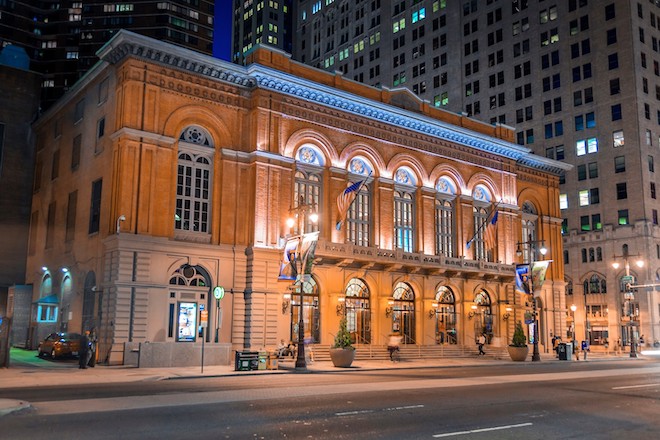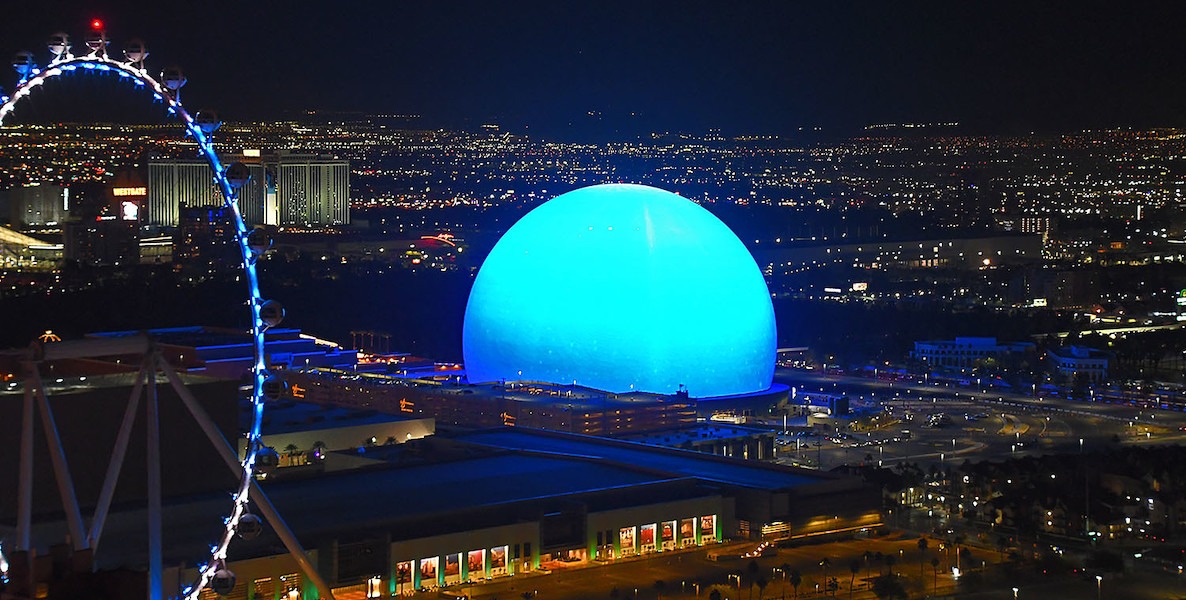The Greater Philadelphia Cultural Alliance and PA Humanities released a report this week showing that only 15 percent of performing arts organizations and 41 percent of museums in Southeastern Pennsylvania have regained their pre-pandemic attendance levels. Nearly one-third of those surveyed are unsure when, if ever, they’ll fully rebound.
These figures are stunning — but also not that surprising given recent headlines in Philadelphia’s arts scene. Just in the last couple weeks, Opera Philadelphia announced that it is putting its annual Festival O on hold after failing to fill more than 59 percent of its seats in its 2023 season, and PAFA announced that it is winding down its degree-granting programs.
Much has been written about the impact of work from home on cities — from office building vacancy to lowered transit use to the loss of lunchtime service at restaurants. But comparatively little has been written about the “culture from home” phenomenon and its toll on the urban arts establishment.
At an existential level, major arts and culture institutions are critical to urban identities.
People have been accessing culture from home ever since the invention of radio and TV. But the pandemic took things to a new level, with social media’s addicting algorithms, prestige TV offering an abundance of shows to stream, and many arts organizations’ quick pivot to digital programming. In addition, inflation raised the cost of everything from babysitters to ticket prices, making in-person culture less accessible or appealing to many than a night of culture at home. Long after Covid receded, these other threats to in-person arts attendance remained; and most arts institutions have simply not come back after the pandemic.
But the decline in arts attendance is not equally distributed. It seems to be attacking the old arts establishment more than upstarts and digital art happenings, like online performances.
This is one of those productive crises that Philadelphia should not waste.
The pain is not evenly distributed
Recent research by the National Endowment for the Arts shows how in-person arts attendance is declining. Nationally, just 48 percent of people attended at least one in-person arts event in 2021-2022, down 6 percentage points since 2017. That’s a big decline, about 18 million fewer people, or the entire population of New York, Los Angeles, Chicago and Houston combined. Older, educated White people are pulling back from in-person arts programming the most, while women; 18- to 24-year-olds; African American, Hispanic, and non-White, non-Hispanic adults were frontrunners in engaging in digital arts.
This research put data to what we’ve all seen: Gen Z is engaging with the arts digitally, and arts institutions relying on older, White audiences are seeing attendance decline. This data is consistent with other recent findings that the pandemic has crushed the arts establishment. According to the Washington Post:
Experts in theater management say that 25 percent to 30 percent of theater audiences have not returned since the pandemic shutdown of March 2020 that lasted until late 2021. Retrenchment has continued, they say, not so much out of lingering fears of getting sick, but because theater simply receded as a priority as other pastimes filled the gap.
Indeed, the GPCA and PA Humanities report shows that attendance is down 22 percent since 2019 across all types of arts organizations.
Philadelphia is not alone in seeing reduced arts attendance. While recent special exhibitions such as Rising Sun at the African American Museum and a Matisse retrospective at the Philadelphia Museum of Art have brought out the crowds, museums around the world are seeing visitor numbers decline.
The Met, previously the country’s most visited museum, is down 34 percent or 1.7 million visitors compared with 2019. The Solomon R. Guggenheim Museum (down 42 percent), the Whitney Museum of American Art (down 19 percent) and the Brooklyn Museum (down 17 percent), are all still below their pre-Covid figures. Looking at data of the top 100 museums around the world, I counted only 15 that registered straightforward growth since 2019, mostly in other countries.
But arts and culture is far from a dying industry — in fact, aren’t we all creators now? We’re actually drowning in art and creative work, from photography on Instagram to dance on TikTok. It’s just that established arts organizations haven’t figured out how to address these changes in demographics and arts consumption and kept up.
You may be thinking: Let those old organizations die off!
To be sure, the arts establishment will be replaced by younger and more diverse arts leaders and institutions, and new art forms. And we should encourage and celebrate that. An op-ed refuting the narrative of arts decline in Chicago points to the fact that most of the declining audiences and layoffs in the field are centered around old, pale, stale institutions that invested in buildings instead of people. By contrast, the writers paint a picture of a vibrant arts scene full of young, BIPOC talent. We shouldn’t rescue old arts organizations that have overspent on fancy new buildings and underperformed on innovation.

But the old arts establishment is essentially composed of anchor institutions. Philadelphia’s Academy of Music predates the Civil War. The Met has been in New York for 150 years. Institutions of this ilk own millions of historic square feet of real estate, and a loss of productive use of these spaces could pose a problem for cities akin to office buildings. (If you think repurposing office buildings is hard, try re-adapting historically preserved buildings!)
These arts anchors employ thousands of people often at higher wages than smaller nonprofits, procure millions of dollars of goods and services, and contain billions of artwork and equipment. According to the GPCA, they deliver $4.1 billion in economic impact and 55,000 jobs. Not to mention that they have done the work of already reaching and connecting with an audience — work that isn’t fast or easy to recreate.
Additionally arts and culture can be a backbone of tourism — whether a big vacation or just a night out that trickles down to spending on parking, transit, restaurants and bars. While there are ways to transition tourism away from depending on big arts institutions, that transition needs to be intentional, or cities will miss out on the revenue they could otherwise capture.
What if major arts institutions touted the number of start up organizations they spun off? What if they delivered breakthroughs in the arts? What if they sought to exponentially grow the number of jobs in the creative industries in their city?
Finally, at an existential level, major arts and culture institutions are critical to urban identities. What is Washington, D.C. without the Smithsonian museums, Paris without the Louvre, Philly without the PMA? They distinguish cities from one another and from the suburbs that typically do not contain these assets. You can imagine how digital arts could imprint a new identity on cities — I’m thinking of the Sphere in Las Vegas — but they seem endlessly replicable. Which city will get a Sphere next?
These institutions remind me of legacy cities of the Rust Belt — they may decline but they will absolutely never die. They have people who love them and will fight for them. Wouldn’t it be better to help them survive and thrive while also giving more space and attention to the new generation of artists and arts organizations?
Use the innovation district model for the arts
For a while now, we’ve thought that big creative assets could revitalize neighborhoods and inject excitement into cities. Think of Lincoln Center in the 1960s, Bilbao in the 2000s, The Shed at Hudson Yards in the 2020s. The Bilbao effect helped every city from Milwaukee to Roanoke to justify spending millions on museums to lure tourists and residents. In the 1990s and 2000s, every city wanted to capture the idea of a “creative class,” and many put real money behind arts and culture initiatives.
But the Great Recession in 2008 really changed things. Public and private sector supporters put a necessary focus on inequality, which has only grown since. And that focus on social justice was for too long seen as incompatible with a civic focus on arts and culture. At the same time, economic development agencies leaned into industries like tourism and tech, which had clearer return on investment for cities.
But rare was the city that took creative class strategies to mean more than signaling. Often arts organizations were left to fare and fundraise for themselves.
By contrast, cities put a lot more intention into tech-focused innovation districts. These districts built upon deep relationships between universities, private-sector investment, and tech companies. Clearly they had a greater profit motive than the creative city strategy, but they also had key performance indicators (KPIs) beyond just money. They valued jobs produced, the number of start-ups created, the amount of investment they could lure, the kind of field-changing breakthroughs they could claim.
What if arts institutions had similar KPIs? What if major arts institutions touted the number of start up organizations they spun off? What if they delivered breakthroughs in the arts? What if they sought to exponentially grow the number of jobs in the creative industries in their city? I think if questions like these guided arts institutions, they’d embark on very different business models than the current prevailing ones.
Create new business models
It’s shocking to me that so few arts institutions have broken with the prevailing business model of ticket sales, memberships, grants and donors. Adding family day activities, a restaurant, young friends events and a podcast does not count as innovation — they’re table stakes.
In Philadelphia, two young entrepreneurs started a company called REC Philly. REC Philly calls itself “a club for the world’s most ambitious creators seeking to transform their creative passion into a thriving career.” I would love to see how an old major arts institution could partner with them.
Where are the arts institutions helping their audiences navigate the new digital arts — NFTs, video editing, generative AI art? Where are the institutions that offer co-working or group travel? Why haven’t the museums and performing arts companies that offer art/music/dance lessons launched YouTube channels — or innovated their current channels since the days of Covid? What if they offered art consultancy? There are so many businesses adjacent to these art institutions it’s wild to me that arts institutions are reluctant to engage them and break the mold of their business models.
Embrace the next generation
Finally, cities have a wealth of artists and creators who collectively probably outnumber the arts anchors. But they’re not well known. They probably have a loyal local following, but they’re not on the local tourism agency’s radar, they’re not benefiting from the partnerships that the major institutions get. It is heartening to see Center City District has just launched a new initiative, Center City on Stage, which will offer discounted tickets to 10 theaters in Center City — but not surprisingly, it supports established institutions. We could be doing so much more to lift up this next generation — whether by encouraging partnerships between arts institutions and newer artists, or by supporting new anchors that are dedicated to showcasing the future of the field.
Diana Lind is a writer and urban policy specialist. This article was also published as part of her Substack newsletter, The New Urban Order. Sign up for the newsletter here.
![]()
MORE NEW URBAN ORDER IN THE CITIZEN
The Sphere in Las Vegas, NV. Photo by Terry Pridemore for Flickr.



